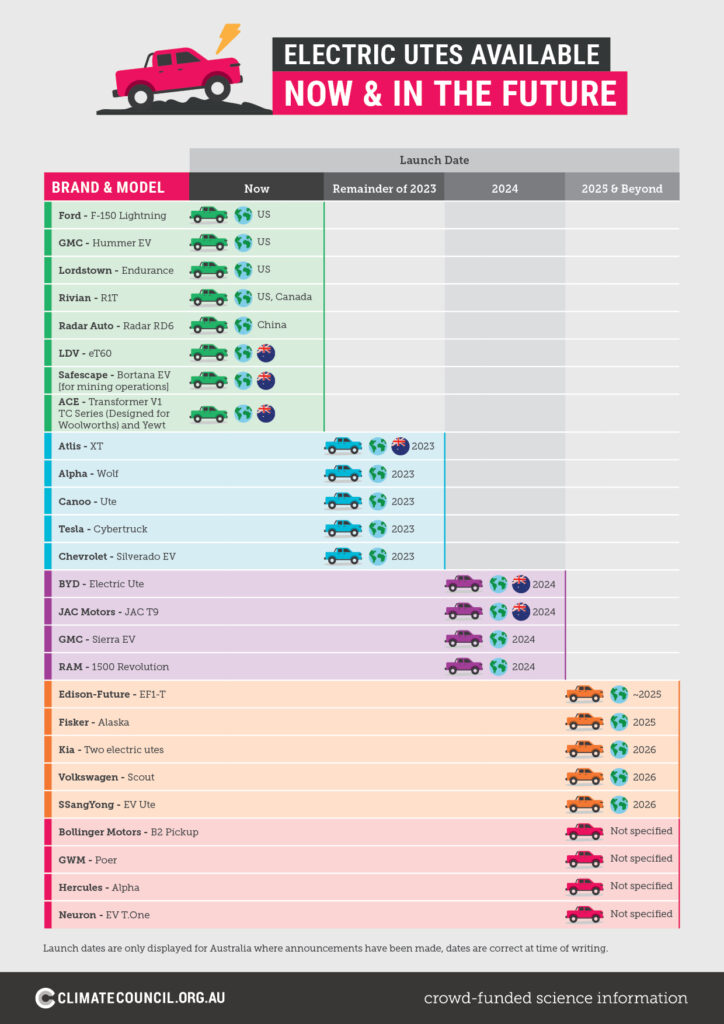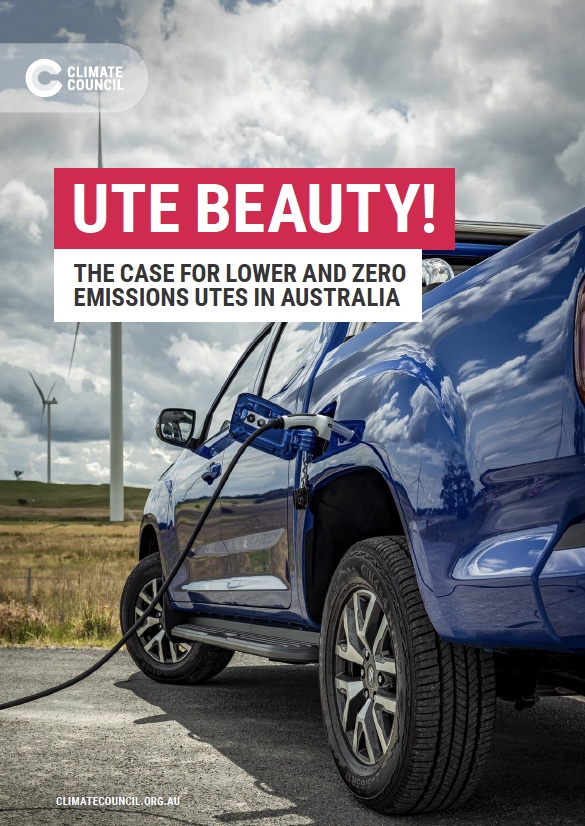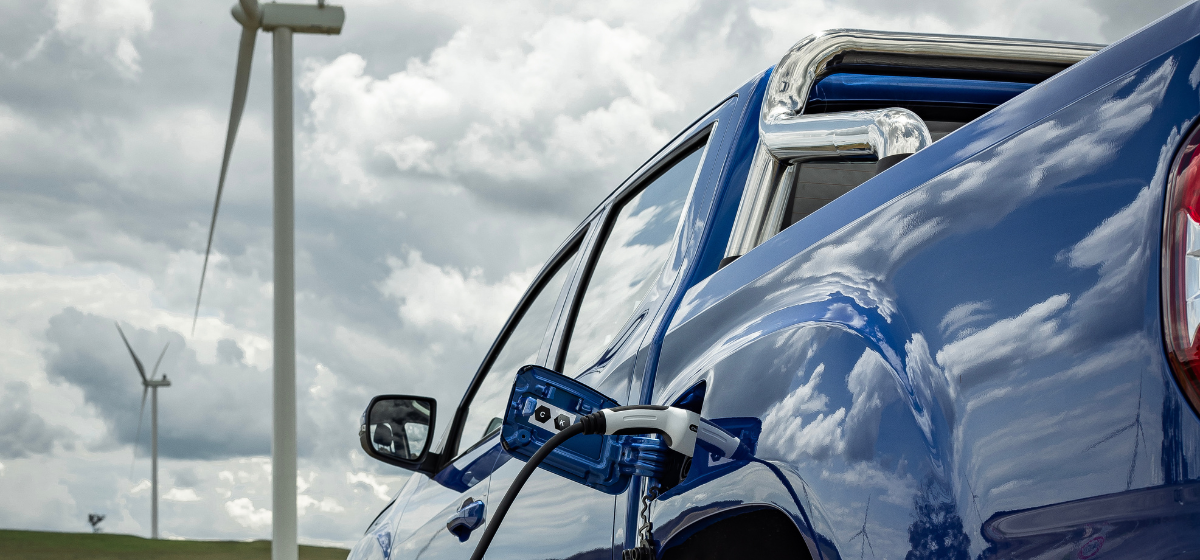Utes have long been part of work life in Australia, used in particular for construction, mining and agriculture. Some drivers also use them for convenience and recreation, with utes now making up one in five new car sales. As we move towards a zero emission future, we all need to think about how we move around. While there needs to be a focus on encouraging zero emissions ways of getting around like active and public transport, it is likely utes will continue to play some role in Australia’s transport mix.
The good news is zero emissions electric utes are on the way. The top selling ute for over four decades in major markets – the Ford F-150 – is now available in an all-electric version in the United States (US) and other markets. A growing number of mainstream brands are ramping up production of zero emissions utes. These aren’t as widely available as zero emissions light passenger vehicles yet, but the technology is improving fast and more zero emissions utes are expected to become available in the next five years.
As more electric utes are manufactured overseas, strong fuel efficiency standards can help bring them here so Australian ute drivers have more choice, can make big savings on their fuel bills and cut their emissions. That’s why we need to implement strong fuel efficiency standards as soon as possible.
In the meantime, if drivers need a new ute today and are unable to get their hands on a zero emission option just yet, it’s also possible to significantly cut fuel bills and emissions by choosing the most efficient ute on the market instead of petrol and diesel-guzzling, highly polluting options. This brief provides a snapshot of where the electric ute market is going, and highlights that the fuel efficiency and emissions profile of new utes sold in Australia varies hugely. This means that those looking to buy a ute today can already tap into cost and emissions savings by choosing a more efficient ute that is cheaper to run, even before electric utes become readily available.
Strong fuel efficiency standards would encourage more supply of the lowest emitting and cheapest petrol and diesel utes relative to more polluting models, while also helping ensure the supply of zero emission utes ramps up in the next few years.

1. To get to net zero, the way we get around in Australia needs to change.
- Transport is the third largest source of Australia’s greenhouse gas emissions. Cars and light commercial vehicles alone make up nearly two-thirds (62 percent) of transport pollution.
- While many other sectors have begun a necessary decline in emissions, personal transport is one of Australia’s fastest growing sources.
- Decarbonising personal transport involves more than simply swapping petrol vehicles for electric vehicles. We need to shift the focus of transportation away from being dominated by private cars altogether.
- Increased uptake of active and public transport is the best option for reducing emissions, and it’s better for our health, hip pockets and liveable cities too.
2. In Australia, ute sales are growing and the most popular vehicles are also among the worst performing, and most polluting. This isn’t sustainable.
- Emissions from light commercial vehicles, including utes, have jumped by around 20 percent in the past decade.
- Many utes are expensive to run and pump out high levels of harmful carbon dioxide (CO2) and other pollutants.
- In the past decade, new ute sales have risen significantly: from 16 percent of all new car sales in 2012, to 21 percent in the 12 months to October 2022 (over 217,000 utes).
- The two top selling utes in Australia – the Toyota HiLux and Ford Ranger – are expensive to run and produce a lot of emissions, but there are more efficient alternatives.
3. Electric utes are on the horizon and we can hasten their arrival with strong fuel efficiency standards.
- By 2030, electric utes and vans are projected to make up more than half of light commercial vehicle sales in Australia. Given the closing window to avoid locking in harmful climate change the sooner the transition the better.
- Countries that have strong fuel efficiency standards already have a growing range of electric utes. If we put them in place here, it’ll lead to better choices for us, too.
- Fuel efficiency standards will result in utes that are both cheaper to run and better performers.
- Fuel efficiency standards cover 80 percent of the global car market. Because Australia has been so slow to catch up, we have become a dumping ground for polluting fossil fuel-powered cars.
- Strong fuel efficiency standards can support Australia to attract more lower and zero emissions models, like the Ford Maverick hybrid ute, the electric Ford F-150 Lightning and the Rivian R1T.
4. Lower-emissions options are available now while we wait for electric utes to become more widely available, and more affordable.
- While we need to phase out fossil fuel-powered cars, this won’t happen overnight. In the meantime, drivers can still choose more efficient options that save them lots of money, and cut emissions.
- If all Australians who bought one of the top-selling utes in the 12 months to October 2022 had instead opted for the lowest emitting model, they would have collectively saved a total of $42 million in fuel costs and avoided over 87,300 tonnes of CO2 emissions.
- If in the next five years everyone in the market for a ute bought the most efficient 2022 model, this would cut collective fuel bills by $210 million over that period and avoid 436,600 tonnes of harmful CO2 emissions being pumped into our atmosphere.











